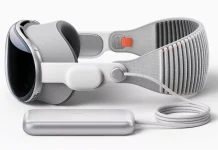Honda’s ASIMO (Advanced Step in Innovative Mobility) represents one of the most remarkable achievements in the field of robotics. Since its debut, ASIMO has captivated the world with its advanced capabilities and human-like characteristics, embodying the potential of humanoid robots in various aspects of daily life. This pioneering robot not only showcases Honda’s commitment to technological innovation but also serves as a benchmark for future developments in robotics.
ASIMO was designed with the ambitious goal of creating a robot that could assist humans in everyday tasks, particularly in environments that are challenging or hazardous. The project has spanned decades of research and development, involving intricate engineering, sophisticated software, and groundbreaking advancements in artificial intelligence. The result is a robot that can walk, run, climb stairs, and even interact with people in a meaningful way.
This article delves into the fascinating journey of ASIMO, exploring its history and development, key features, and the various ways it has impacted industries such as healthcare, education, and entertainment. By understanding ASIMO’s evolution and contributions, we can gain valuable insights into the future of robotic technology and its potential to transform our lives.
History and Development
Honda’s journey toward creating ASIMO began with a vision to develop an autonomous, humanoid robot capable of assisting humans. This ambitious goal required years of relentless research and development, culminating in a series of prototypes and technological breakthroughs that paved the way for ASIMO’s creation.
Early Prototypes
The origins of ASIMO trace back to the mid-1980s when Honda initiated its humanoid robotics program. The earliest efforts were embodied in the E-series, a collection of experimental models designed to test fundamental aspects of bipedal locomotion. The E0, introduced in 1986, was a rudimentary device that could take hesitant, unstable steps. Each subsequent model in the E-series refined these basic abilities, incorporating advancements in balance, stability, and walking mechanics. By the time Honda reached the E6 model in 1993, the robot could walk in a more human-like manner, albeit with significant limitations in speed and agility.
Technological Milestones
Building on the foundation laid by the E-series, the development team transitioned to the P-series (Prototype series) in 1993. The P1, introduced in 1993, was a significant leap forward; it could walk, climb stairs, and even grasp objects with its hands. The subsequent models, P2 and P3, introduced in 1996 and 1997 respectively, showcased remarkable enhancements in agility, autonomy, and human-like dexterity. The P3, in particular, was a major milestone: it featured a more compact and streamlined design, standing at 160 cm tall and weighing 130 kg. It could walk smoothly at a speed of up to 2 km/h and manipulate objects with greater precision.
Public Unveiling
ASIMO, the culmination of Honda’s intensive research and iterative improvements, was officially unveiled to the public on October 31, 2000. Standing at 120 cm tall and weighing 52 kg, ASIMO was designed to be friendly and approachable, with a sleek, futuristic appearance. Its compact size and advanced capabilities marked a significant departure from its predecessors, making it the world’s most advanced humanoid robot at the time. ASIMO could walk at a speed of 1.6 km/h, recognize and interact with humans, and perform various tasks, such as carrying trays and pushing carts.
The public unveiling of ASIMO was a landmark event, capturing global attention and solidifying Honda’s position at the forefront of robotics innovation. The robot’s debut demonstrated not only the technological prowess of Honda but also the potential of humanoid robots to enhance various aspects of human life.
Through decades of persistent effort and ingenuity, Honda’s ASIMO emerged as a symbol of the possibilities within robotics. This journey from rudimentary prototypes to an advanced, autonomous humanoid robot underscores the relentless pursuit of innovation that defines Honda’s approach to technology and engineering.
Key Features
Honda’s ASIMO stands as a testament to the remarkable advancements in robotics. Designed to function autonomously and interact with humans, ASIMO incorporates a myriad of key features that distinguish it from earlier robotic designs. These features can be categorized into three main areas: Mobility, Artificial Intelligence, and Human Interaction.
Mobility
One of ASIMO’s most groundbreaking features is its advanced mobility. ASIMO is equipped with an intricate system of sensors, gyroscopes, and accelerometers that enable it to move with a degree of agility and balance previously unseen in humanoid robots. Key aspects of its mobility include:
- Bipedal Walking: ASIMO can walk on two legs, maintaining balance even on uneven surfaces. This ability to walk upright is a significant technological achievement, mimicking human locomotion.
- Running: ASIMO can run at a speed of up to 9 km/h (about 5.6 mph). It can make smooth transitions between walking and running, showcasing its advanced dynamic balancing capabilities.
- Stair Climbing and Descending: The robot can navigate stairs, a complex task requiring precise coordination and balance. This feature is crucial for practical applications in real-world environments.
- Obstacle Avoidance: With its array of sensors, ASIMO can detect and avoid obstacles in its path, ensuring smooth and safe navigation in dynamic environments.
Artificial Intelligence
ASIMO’s AI capabilities are another cornerstone of its design, enabling it to perform a variety of tasks autonomously and interact intelligently with its environment. Key AI features include:
- Autonomous Navigation: ASIMO is equipped with a combination of visual and auditory sensors that allow it to map its surroundings and navigate through them without human intervention. This includes recognizing and responding to changes in its environment.
- Object Recognition: Using advanced vision processing algorithms, ASIMO can identify and interact with objects. This includes recognizing faces, understanding gestures, and manipulating objects with its dexterous hands.
- Voice Recognition: ASIMO can understand and respond to voice commands in multiple languages. It is also capable of identifying individual voices, which allows for personalized interactions.
- Learning and Adaptation: Through machine learning algorithms, ASIMO can adapt to new tasks and improve its performance over time. This makes it a versatile tool capable of evolving in its functionality.
Human Interaction
One of ASIMO’s primary goals is to facilitate better human-robot interaction. This is achieved through a range of features designed to make its interactions with humans as natural and intuitive as possible:
- Gestural Communication: ASIMO can interpret and respond to human gestures, such as hand waves and pointing. This enhances its ability to understand and follow non-verbal cues.
- Expressive Movements: ASIMO’s design includes the ability to perform a variety of expressive movements, such as nodding, shaking hands, and even dancing. These movements are crucial for making interactions more relatable and engaging.
- Collaborative Tasks: ASIMO can work alongside humans to complete tasks. Its ability to understand and predict human actions allows it to be an effective collaborator in settings such as workshops and laboratories.
- Safety Features: ASIMO is equipped with numerous safety features, including collision detection and emergency stop mechanisms, ensuring that it can operate safely around humans.
In summary, ASIMO’s key features in mobility, artificial intelligence, and human interaction underscore its role as a pioneer in the field of robotics. These features collectively enable ASIMO to perform a wide range of tasks autonomously while interacting seamlessly with humans, laying the groundwork for future advancements in humanoid robotics.
Impact and Applications
Honda’s ASIMO has transcended its initial role as a mere technological marvel to become a symbol of innovation with far-reaching implications across various sectors. This section explores the profound impact and diverse applications of ASIMO in healthcare, education, and entertainment.
Healthcare
ASIMO has made significant strides in the healthcare sector, particularly in aiding the elderly and individuals with disabilities. Designed with advanced mobility and dexterity, ASIMO can assist in physical therapy by offering support and stability to patients learning to walk again. Its ability to navigate complex environments and perform tasks such as fetching items or delivering medication has the potential to ease the workload of healthcare professionals and improve patient care. Furthermore, ASIMO’s development has spurred advancements in robotic prosthetics and exoskeletons, offering new hope to those with mobility impairments.
Education
In the realm of education, ASIMO serves as both an inspirational tool and a practical assistant. Schools and universities have utilized ASIMO to demonstrate the principles of robotics, engineering, and artificial intelligence, igniting curiosity and fostering a new generation of innovators. Its interactive capabilities make learning more engaging, allowing students to witness firsthand the applications of STEM (Science, Technology, Engineering, and Mathematics) concepts. Additionally, ASIMO can assist in special education settings, providing individualized support to students with learning disabilities or physical challenges, thus promoting inclusivity and personalized learning experiences.
Entertainment
ASIMO’s captivating presence and advanced capabilities have made it a star in the entertainment industry. From making public appearances at technology expos to starring in commercials and television programs, ASIMO has captured the public’s imagination and showcased the potential of humanoid robots. Its ability to perform complex dance routines, play musical instruments, and even engage in simple conversations has not only entertained audiences but also demonstrated the possibilities of human-robot interaction. Moreover, ASIMO’s appearances have helped bridge the gap between science fiction and reality, fostering a broader acceptance and enthusiasm for robotic technologies.
Conclusion
Honda’s ASIMO represents a significant milestone in the field of robotics, embodying decades of research, innovation, and technological advancement. From its early prototypes to its final iterations, ASIMO has consistently pushed the boundaries of what robots can achieve, particularly in terms of mobility, artificial intelligence, and human interaction.
ASIMO’s ability to walk, run, climb stairs, and perform complex tasks in real-world environments has set a new standard for humanoid robots. Its sophisticated AI systems enable it to recognize faces, understand gestures, and respond to voice commands, making it one of the most advanced robots in terms of human interaction. These features have not only demonstrated the incredible potential of robotics but have also inspired new lines of research and development in the field.
The impact of ASIMO extends beyond mere technological achievement. In healthcare, ASIMO has shown promise in assisting the elderly and disabled, offering a glimpse into a future where robots could significantly enhance quality of life. In education, ASIMO has been an engaging tool to inspire students and spark interest in STEM fields. In entertainment, its performances have captivated audiences, showcasing the harmonious blend of technology and creativity.
In conclusion, ASIMO is more than just a robot; it is a symbol of human ingenuity and a harbinger of what the future may hold. As we continue to explore and develop new technologies, the lessons learned from ASIMO will undoubtedly inform and inspire the next generation of robotic innovations. Honda’s commitment to pushing the boundaries of what is possible has not only advanced the field of robotics but has also opened up new possibilities for how robots can be integrated into our daily lives.





.jpg?w=100&resize=100,70&ssl=1)

A great piece of hardware with non-aggressive appearance. I hope development will continue for medical and educational applications.